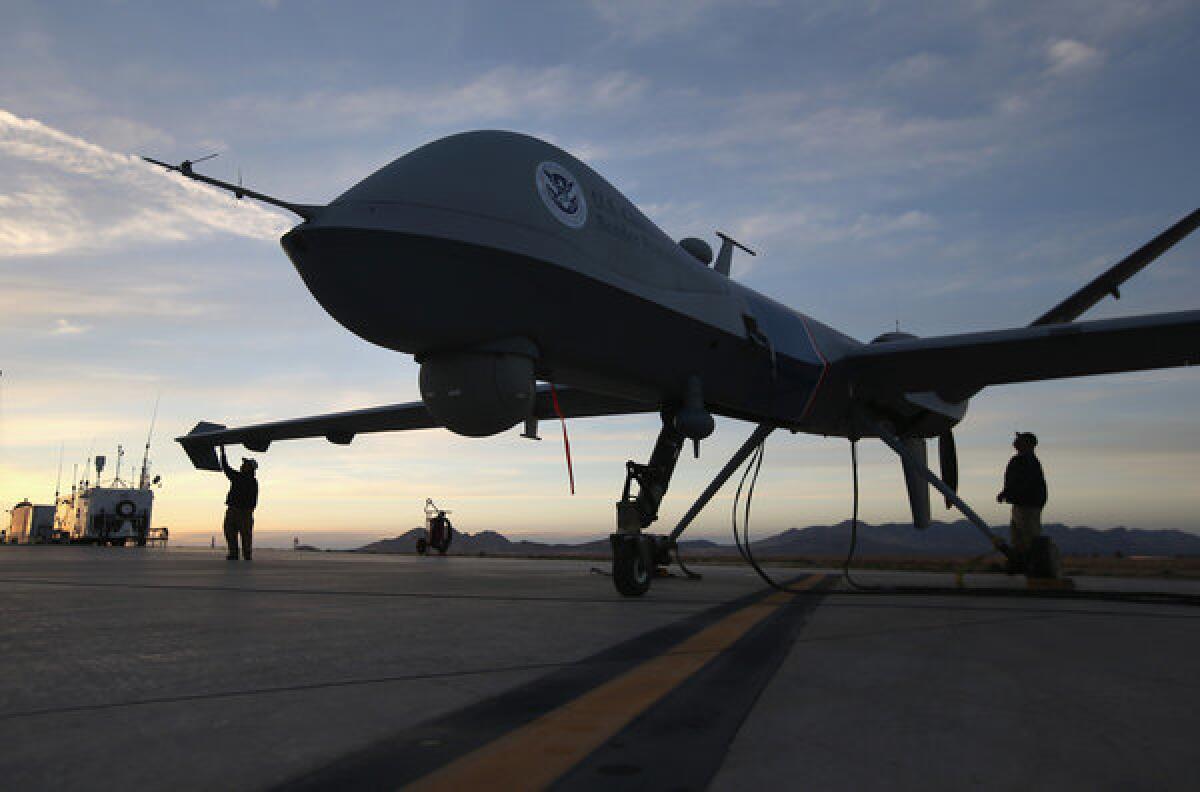Are drones along the border (all day, every day) cost-effective?

- Share via
In its current form, the so-called Gang of Eight immigration bill increases funding for border security by up to $6.5 billion. When it comes to technology and equipment, the Senate bill doesn’t go into much detail on how the government should spend its funds. But the bill is clear about one thing: It calls for 24/7 drone surveillance along the 1,950-mile southern border.
The unarmed Predators, which cost $18 million, operate at about $3,000 per hour. Doing the math, we find that it would cost more than $26 million a year to keep just one drone in the air 24/7.
Price aside, a 2012 Center for International Policy report found that drones, over six years, contributed to only 0.001% of the apprehensions at the border. In the 2012 fiscal year, drones led to only 143 apprehensions, accounting for just a sliver of the 365,000 apprehensions during that time.
The drone program itself has also fallen under scrutiny. In May 2012, the Department of Homeland Security’s inspector general released a report detailing poor management of the program. The report found that U.S. Customs and Border Protection was significantly underutilizing its seven-drone fleet, flying only 3,909 of its 7,336 scheduled hours. Still, the Border Patrol added two drones to its fleet in 2011 and one in 2012. After operations pushed the program over its budget, the agency had to transfer $25 million from other programs. At the time, the report recommended no additional drones be purchased until reforms were made.
Given these findings, the United States couldn’t possibly get its money’s worth by pursuing nonstop drone surveillance along the border.
This is especially true when more economically efficient options might exist, as an NPR piece reported last week:
“Even [U.S. Customs and Border Protection] says it has more economical alternatives. It has been trying out a Cessna aircraft with a camera that costs one-tenth of what the Predator drone camera costs. The agency also relies on ground-based tools, such as camera and radar towers.”
In the section on technology and equipment, the legislation also calls for an expansion in mobile, video and portable surveillance systems, and more fixed aircraft and helicopters. Unlike the drone provision, however, these stipulations provide more flexibility to arrange the tools in a manner that best serves a comprehensive strategy.
Sen. Charles E. Schumer (D-N.Y.), a member of the Gang of Eight, is right when he argues that drones can see “every single person crossing the border, day or night.”
But there’s a difference between requiring 24/7 drone surveillance (when less costly and more effective alternatives are said to exist) and giving government officials the flexibility to balance drone deployment with other tools at its disposal.
ALSO:
Newton: The real test for Garcetti
Gun control: Close to bullet buyer loophole?
McManus: Obama, Syria and the Aspin doctrine
Twitter: @danielrothberg
More to Read
A cure for the common opinion
Get thought-provoking perspectives with our weekly newsletter.
You may occasionally receive promotional content from the Los Angeles Times.






